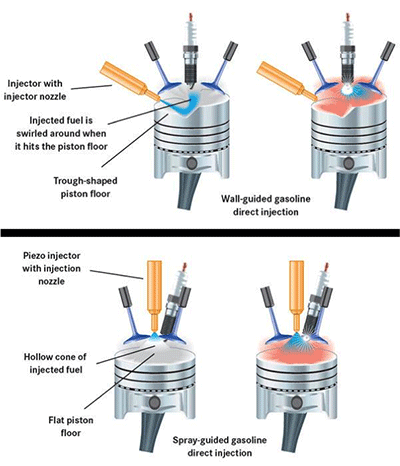Blog
Will GDI engines mean higher particulate emissions? Thanks to already-enacted Tier 3 standards, no
Benjamin Hulac had an interesting story on gasoline particulate emissions for ClimateWire [paywall] on October 3. He was reporting on research by Oak Ridge National Laboratory (ORNL) that found higher particulate emissions from gasoline engines using direct fuel injection (GDI) [paper here, ORNL news item here].
Both ORNL and Hulac accurately characterize the particulate emissions from early GDI engines, which were generally high, and the impact that particulate emissions can have on public health. ORNL does excellent work, but this time they made a fundamental mistake by focusing only on the early GDI engines.
It is important to understand that there are currently no particulate emission standards for gasoline engines. This is because particulate emissions from conventional gasoline engines are so low that EPA considered it a waste of time to regulate them, so the particulate standards only applied to diesel engines. Thus, these early GDI engines were designed without any consideration of particulate emissions. There are so many conflicting demands on engine developers and calibrators that they only focus on the highest priorities, such as meeting emission standards. Since there were no standards for gasoline particulates, it is highly likely that the engineers never even tested for particulate emissions, much less tried to design the engine to reduce particulate emissions.
 There are ways to design and calibrate the GDI system that will dramatically reduce particulate emissions. For example, it is now well known that wall-guided direct injection will create much higher particulate emissions than spray-guided direct injection, as fuel injected with wall-guided systems can impinge upon the cylinder wall. Spray-guided injection directs fuel straight down the cylinder and minimizes particulate formation.
There are ways to design and calibrate the GDI system that will dramatically reduce particulate emissions. For example, it is now well known that wall-guided direct injection will create much higher particulate emissions than spray-guided direct injection, as fuel injected with wall-guided systems can impinge upon the cylinder wall. Spray-guided injection directs fuel straight down the cylinder and minimizes particulate formation.
The design of the combustion chamber and the top of the piston can also affect particulate emissions. Engineers had no incentive to optimize the design for low particulate emissions, as there were no benefits to expending this effort. So, it wasn’t done.
What is needed is simply a particulate emission standard for gasoline engines. Which EPA is aware of and has incorporated into the Tier 3 emission standards that will take effect starting in 2017. This will cause engineers to optimize the fuel injection spray pattern and combustion chamber, which should lead to large reductions in particulate emissions from GDI engines.
And if this isn’t enough, then manufacturers can add a small particulate trap. Particulate traps work a lot better on gasoline engines than on diesel engines because gasoline exhaust temperatures are a lot higher, eliminating the need for a regeneration system to remove stored particulates. In addition, even GDI creates a lot less particulate matter than a diesel does, allowing a smaller trap to be used. Thanks to research published several years ago by the ICCT, we know that a gasoline particulate trap would likely cost around $100. And cost estimates from the Manufacturers of Emissions Controls Association (MECA) are even lower, between $50 and $100.
So: Problem already solved. Harmful particulates will NOT come with greater gas mileage, thanks to EPA’s heads-up attention to the problem well in advance. It’s one concern we can relax about, anyway.
